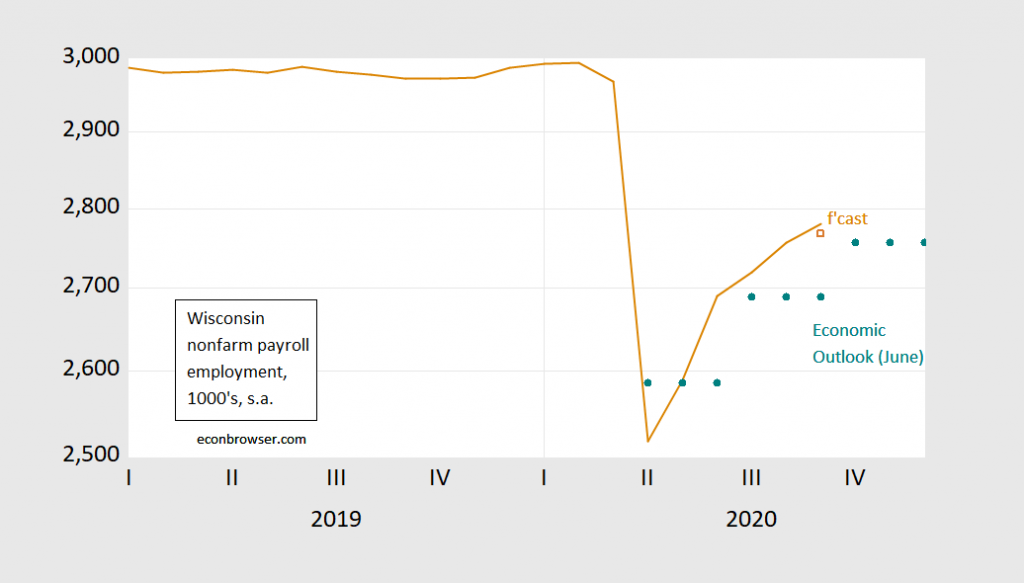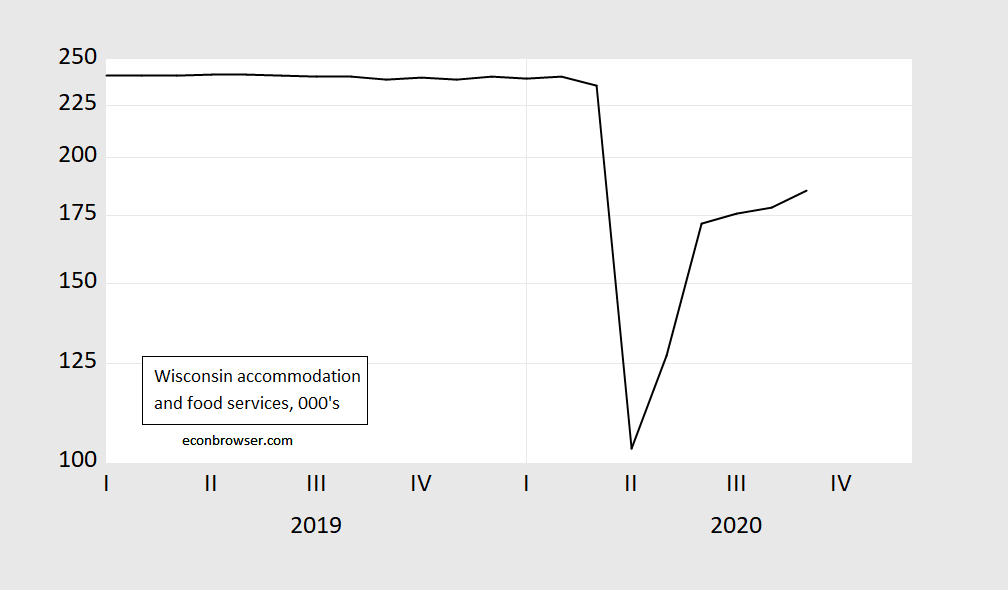Statistics released by Wisconsin DWD show nonfarm payroll employment growing in line with US, but — like at the national level — at a decelerating pace.
Figure 1: Nonfarm payroll employment in Wisconsin, September release (brown), Economic Outlook forecast of June (teal), author’s forecast based on August release of state and September release of national employment (brown box), in 000’s, s.a. Source: BLS, DWD, Wisconsin Economic Outlook (June 2020), and author’s calculations.
June through September month-on-month annualized growth has declined from 59% to 14% to 17% to 11%.
I used a first-log-differences specification between Wisconsin and national employment over the 2019-2020M08 period to forecast August employment. For September, the forecast error was 13072 (underpredicted by 0.5%). The methodology is discussed in this post.
Manufacturing employment continued to grow as well, although somewhat haltingly, given August employment is revised down.
Figure 2: Manufacturing employment in Wisconsin, September release (black), August release (brown), in 000’s, s.a. Source: BLS and DWD.
Accommodation and food services are down 54800, or 22.8% relative to February 2020.
Figure 3: Accommodation and food services employment in Wisconsin, September release (black), in 000’s, s.a. Source: BLS and DWD.
The unemployment rate also fell, from a revised 6.3% to 5.4%; US unemployment rate fell from 8.4% to 7.9%.



BLS tracks employment statistics by state by category, but I haven’t seen the converse… employment statistics by category by state that would provide interesting comparisons of how states compare in such categories as Leisure & Hospitality. The data is there so the cut has to be available somewhere and would be helpful to explain why some states are hit harder than others depending on the issue causing the problem.
https://www.bls.gov/regions/midwest/wisconsin.htm#eag
US unemployment rate fell from 8.4% to 7.9%.
True, but then again the civilian labor force also fell as women exited the workforce. Women likely won’t be returning to the labor force until we get the pandemic under control along with an effective vaccine. On the bright side, that’s one way to close the potential GDP gap…just lower potential GDP!
That’s an odd report. It claims that over 100,000 more people were “employed” in September vs August, but only 23,000 jobs were added. Both are not likely to be correct.
Also, the 212,000 job loss in Wisconsin since February is a similar proportion to the US’s 10.7 million, so I’ll trust the payrolls survey on this one.
https://jakehasablog.blogspot.com/2020/10/either-wisconsin-is-nearly-back-to.html
Jake formerly of the LP: I’d say at the state level, pretty much always better to go with the payroll survey.